HISTORY OF GREAT BRITAIN The United Kingdom

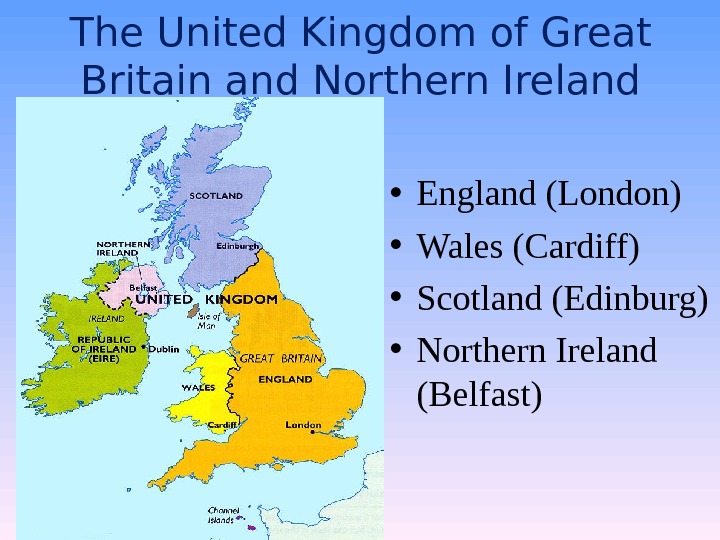

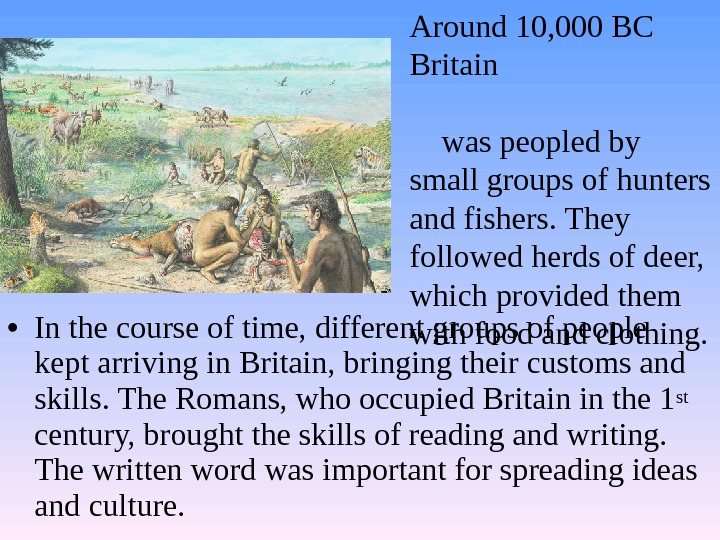

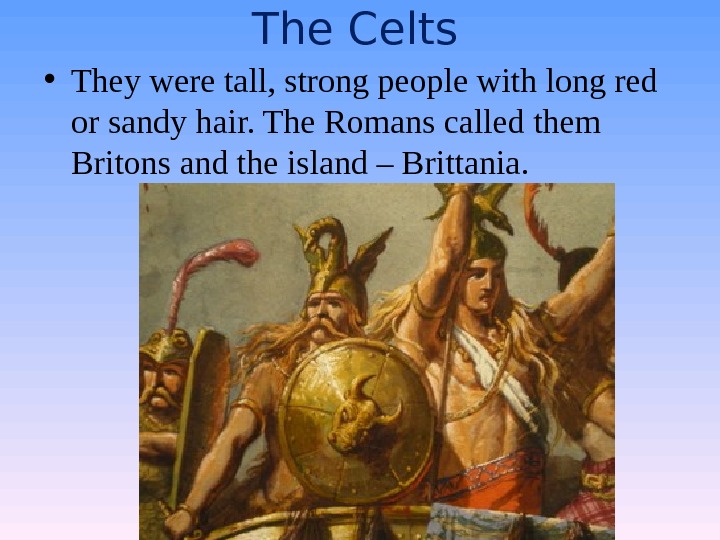


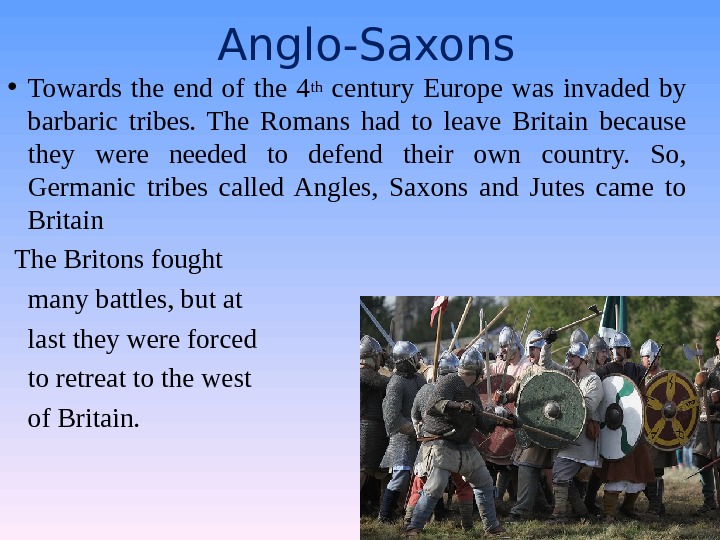


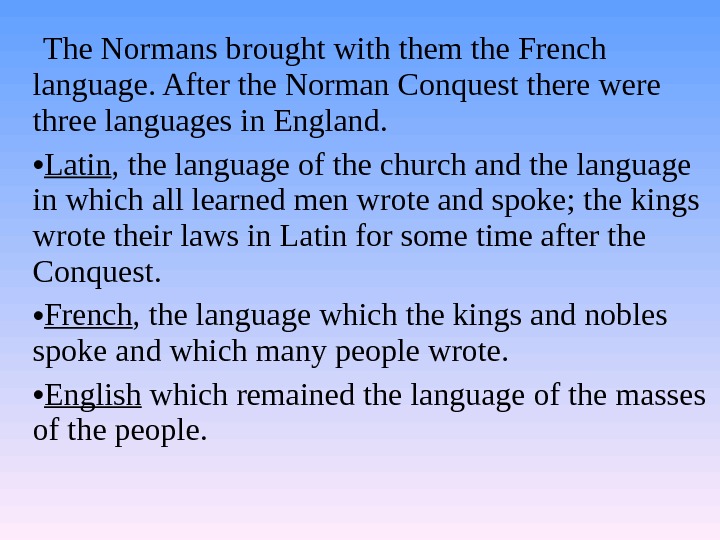

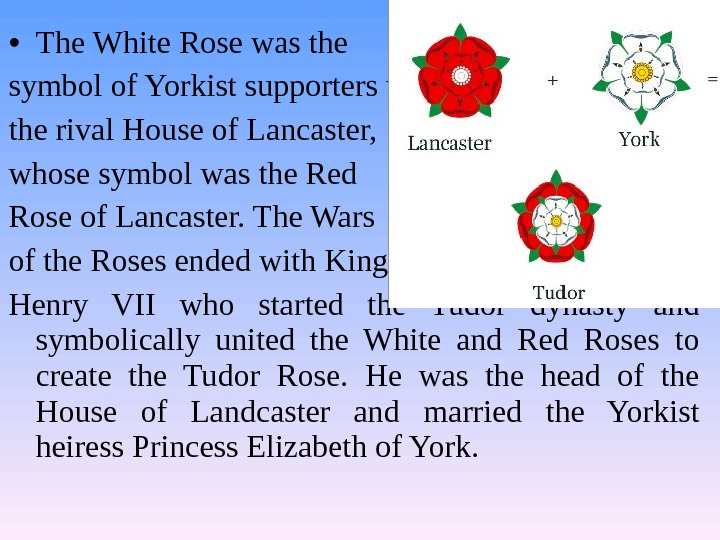
- Размер: 1.4 Mегабайта
- Количество слайдов: 14
Описание презентации HISTORY OF GREAT BRITAIN The United Kingdom по слайдам
 HISTORY OF GREAT BRITAIN
HISTORY OF GREAT BRITAIN
 The United Kingdom of Great Britain and Northern Ireland • England (London) • Wales (Cardiff) • Scotland (Edinburg) • Northern Ireland (Belfast)
The United Kingdom of Great Britain and Northern Ireland • England (London) • Wales (Cardiff) • Scotland (Edinburg) • Northern Ireland (Belfast)
 Geographical position • Total area is 244 square kilometers • Consist of Great Britain and Ireland, small main islands : Isle of Wight, Isle of Man, the Hebrides, the Orkney Islands, the Shetland Islands.
Geographical position • Total area is 244 square kilometers • Consist of Great Britain and Ireland, small main islands : Isle of Wight, Isle of Man, the Hebrides, the Orkney Islands, the Shetland Islands.
 • In the course of time, different groups of people kept arriving in Britain, bringing their customs and skills. The Romans, who occupied Britain in the 1 st century, brought the skills of reading and writing. The written word was important for spreading ideas and culture. Around 10, 000 BC Britain was peopled by small groups of hunters and fishers. They followed herds of deer, which provided them with food and clothing.
• In the course of time, different groups of people kept arriving in Britain, bringing their customs and skills. The Romans, who occupied Britain in the 1 st century, brought the skills of reading and writing. The written word was important for spreading ideas and culture. Around 10, 000 BC Britain was peopled by small groups of hunters and fishers. They followed herds of deer, which provided them with food and clothing.
 Ancient BRITONS • They lived in case, hunted animals for food, learned to grow corn and breed domestic animals • Britons were religious.
Ancient BRITONS • They lived in case, hunted animals for food, learned to grow corn and breed domestic animals • Britons were religious.
 The Celts • They were tall, strong people with long red or sandy hair. The Romans called them Britons and the island – Brittania.
The Celts • They were tall, strong people with long red or sandy hair. The Romans called them Britons and the island – Brittania.
 The ROMANS I n the year 55 BC the great Roman general Julius Caesar sailed to Britain with about 12, 000 soldiers in eighty ships. Britons armed with spears and swords. After fighting on the shore, the Romans marched north-west where London stands today. The British attacked them in chariots and on foot, but the Romans had better arms and armour. The Britons were defeated.
The ROMANS I n the year 55 BC the great Roman general Julius Caesar sailed to Britain with about 12, 000 soldiers in eighty ships. Britons armed with spears and swords. After fighting on the shore, the Romans marched north-west where London stands today. The British attacked them in chariots and on foot, but the Romans had better arms and armour. The Britons were defeated.
 Hadrian’s wall It was crushed but Hadrian decided to build a great wall running right across the country from Newcastle to Carlisle. It was 73 miles long, 7 -10 feet thick, and 16 -20 feet high. In the year 122 the Roman Emperor Hadrian came to Britain. Some years before there had been a serious rebellion in the north Britain.
Hadrian’s wall It was crushed but Hadrian decided to build a great wall running right across the country from Newcastle to Carlisle. It was 73 miles long, 7 -10 feet thick, and 16 -20 feet high. In the year 122 the Roman Emperor Hadrian came to Britain. Some years before there had been a serious rebellion in the north Britain.
 Anglo-Saxons • Towards the end of the 4 th century Europe was invaded by barbaric tribes. The Romans had to leave Britain because they were needed to defend their own country. So, Germanic tribes called Angles, Saxons and Jutes came to Britain The Britons fought many battles, but at last they were forced to retreat to the west of Britain.
Anglo-Saxons • Towards the end of the 4 th century Europe was invaded by barbaric tribes. The Romans had to leave Britain because they were needed to defend their own country. So, Germanic tribes called Angles, Saxons and Jutes came to Britain The Britons fought many battles, but at last they were forced to retreat to the west of Britain.

 The Norman conquest The conquest of England by the Normans began in 1066 with the battle of Hastings, where the English fought against the Normans. They were Vikings or ‘Norsemen’, men from the North. Some 150 years before the conquest of England they came to a part of France, opposite England, a part which we now call Normandy.
The Norman conquest The conquest of England by the Normans began in 1066 with the battle of Hastings, where the English fought against the Normans. They were Vikings or ‘Norsemen’, men from the North. Some 150 years before the conquest of England they came to a part of France, opposite England, a part which we now call Normandy.
 The Normans brought with them the French language. After the Norman Conquest there were three languages in England. • Latin , the language of the church and the language in which all learned men wrote and spoke; the kings wrote their laws in Latin for some time after the Conquest. • French , the language which the kings and nobles spoke and which many people wrote. • English which remained the language of the masses of the people.
The Normans brought with them the French language. After the Norman Conquest there were three languages in England. • Latin , the language of the church and the language in which all learned men wrote and spoke; the kings wrote their laws in Latin for some time after the Conquest. • French , the language which the kings and nobles spoke and which many people wrote. • English which remained the language of the masses of the people.
 The War of Roses • The War of the Roses was a terribly destructive, long-lasting, civil war in England between two families with rival claims to the throne, the Yorks and the Lancasters. Its net result was to kill off almost all the direct claimants to the throne on either side of the royal family.
The War of Roses • The War of the Roses was a terribly destructive, long-lasting, civil war in England between two families with rival claims to the throne, the Yorks and the Lancasters. Its net result was to kill off almost all the direct claimants to the throne on either side of the royal family.
 • The White Rose was the symbol of Yorkist supporters who opposed the rival House of Lancaster, whose symbol was the Red Rose of Lancaster. The Wars of the Roses ended with King Henry VII who started the Tudor dynasty and symbolically united the White and Red Roses to create the Tudor Rose. He was the head of the House of Landcaster and married the Yorkist heiress Princess Elizabeth of York.
• The White Rose was the symbol of Yorkist supporters who opposed the rival House of Lancaster, whose symbol was the Red Rose of Lancaster. The Wars of the Roses ended with King Henry VII who started the Tudor dynasty and symbolically united the White and Red Roses to create the Tudor Rose. He was the head of the House of Landcaster and married the Yorkist heiress Princess Elizabeth of York.
